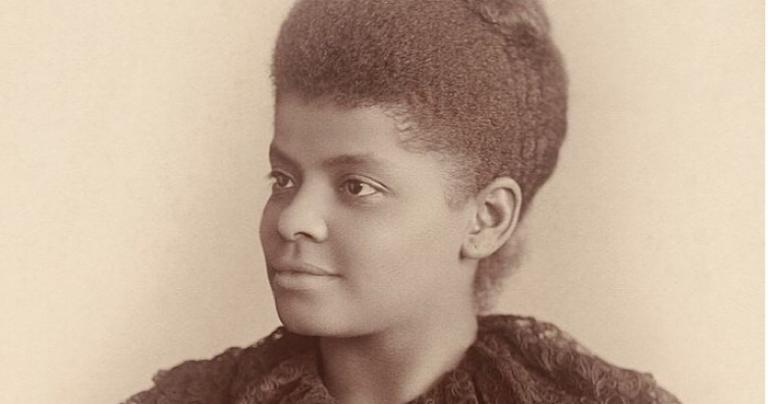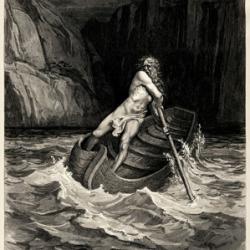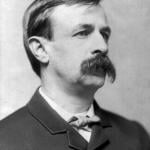
- Ida Wells: a leader in the fight for human dignity and against lynching.
Nothing in American history is so good that white supremacy cannot taint it.
White supremacy, the toxic American belief that survived the end of slavery through the use of lynching and Jim Crow laws, is (almost) everywhere in American history. Saying this clearly without despair or also failing to see what was good and great is difficult, but must be done. White supremacy has caused us to miss many chances
Like Frederick Douglass, Americans can admire the genius and greatness of Abraham Lincoln and still acknowledge his frequent slips into white supremacy. Lincoln, like so many, saw an “African-American problem,” but as Douglass noted, the problem was white supremacy not African-Americans! Abraham Lincoln is a hopeful example, because he grew over the course of his life. The martyr of Good Friday was better than the man who gave his First Inaugural.
Losing Civil War II
Too many of us think the Civil War ended in 1865 and the first phase did end, but Southern white supremacy fought a long rearguard action that eventually made the Northern victory more equivocal. The wing of the Northern white community that had either never favored a prolonged war (mostly Democrats) or the parts of the Republican Party that embraced open white supremacy undercut many of the achievements of the Civil War. There was undue haste to reconcile and the great Reconstruction Amendments (particularly the marvelous XIV) were undercut by bad Supreme Court decisions that ignored the original intent of the framers of the Amendments to return to the original intent (!) of the Framers of the Constitution.
As a result, the losers wrote much of the history of the Civil War with the Lost Cause gaining undue sympathy within decades of the War. When an old line son of Virginia, a Democrat like Woodrow Wilson, openly racist, was elected President, one could even wonder if the South won the second round of the Civil War! The Reconstruction promise of a Second American Revolution was pretty much Gone with the Wind.
The Republican Party herself had long given up defending the best of her heritage with the Lilly White Republicans in charge by the turn of the twentieth century. The GOP retained some of the old abolition fire, remaining preferable to Democrats, but most was snuffed out in the weird buttressing of old style white supremacy with scientific racism (a twisted Darwinism) that came to dominate American university culture.
The Great White City
An example of something wonderful tainted badly by white supremacy is the great exposition of 1893, the Colombian Exposition. The beauty of the exposition helped stimulate better urban planning and the scientific advances presented at the fair inspired a generation of engineers and artists. The city was gleaming white, gorgeous beside Lake Michigan, but horribly, the Great White City was also a great white supremacy city.
Both the good and bad about the Exposition are true. The beauty of the parks and the promotion of science in the exposition made life better. Millions of people had a good time at the exposition, met and married (!), and carried away good memories of marvels like electric lights. Yet the bad was there as well. The white supremacy celebrated in many exhibitions was an outer sign that the majority of the nation was going to ignore the festering lynch law and unconstitutional Jim Crow of the Southern states.
Frederick Douglass himself fought for the millions of Americans ignored in the Exposition: African-Americans.* He worked with the government of Haiti, the republic where slaves liberated themselves, to build an exhibit. There Douglass, a globally famous figure, used his historic celebrity to lambast the white supremacy present in the exhibition. He pointed to a better way. He empowered the brilliant anti-lynch campaigner Ida Wells to produce a sizzling jeremiad distributed to people who came into the exhibition to see the famous man and get some Haitian coffee.
The Reason Why the Colored American is not in the Columbian Exhibition tells the truth. Why were African-Americans excluded? Slavery, transformed into debt and prison farms, and white supremacy were the reason for exclusion at the exhibition : a symptom of the horrors spreading over the nation. Douglass told the hard truth with his Biblical and prophetic voice in a preface and Wells provided most of the argument in this pamphlet.
Douglass even used the exhibitions tokenism and racism on “Negro Day” as a chance to deliver a speech that was an indictment of the day, the fair, and the failure of America to live up to Reconstruction promises and her own Constitution (particularly the XIV Amendment).
The Truth is not Simple
The whole truth is impossible to write. There are good stories to tell from the exhibition and bad. There were themes that helped us become more just and ideas that were ugly. Christians at the exhibition were too often complacent, but there were also tireless prophetic voices of Christian moralism like Frederick Douglass getting some things right.*** Walt Disney’s father worked the exhibition and much that is good about Disneyland owed a debt to the exhibition, but then so might some that is not good in the parks (including the genial scientism and treatment of First Nations in the opening of the Disneyland Park).
We can be sure that all of us are also a tragic blend of the divine and the fallen. That is America: great aspiration, frequently very bad execution. When we judge the past, we should use the Golden Rule and realize that our descendants will also judge us. Tell the truth with as much mercy as truth will allow.
This much we can take as truth: nobody is righteous, but good is still done. Ida Wells should have the last word:
The World’s Columbian Exposition draws to a close and that which has been done is without remedy. The colored people have no vindictiveness actuating them in this presentation of their side of this question, our only desire being to tell the reason why we have no part nor lot in the Exposition. Our failure to be represented is not of our own working and we can only hope that the spirit of freedom and fair play of which some Americans so loudly boast, will so inspire the Nation that in another great National endeavor the Colored American shall not plead for a place in vain.
—————————-
*The treatment of the First Nations was worse.
**In this piece, I will use the term “African-American” when not directly quoting writers from the period.
***Douglass himself is complicated. His views on First Nations are bad.












